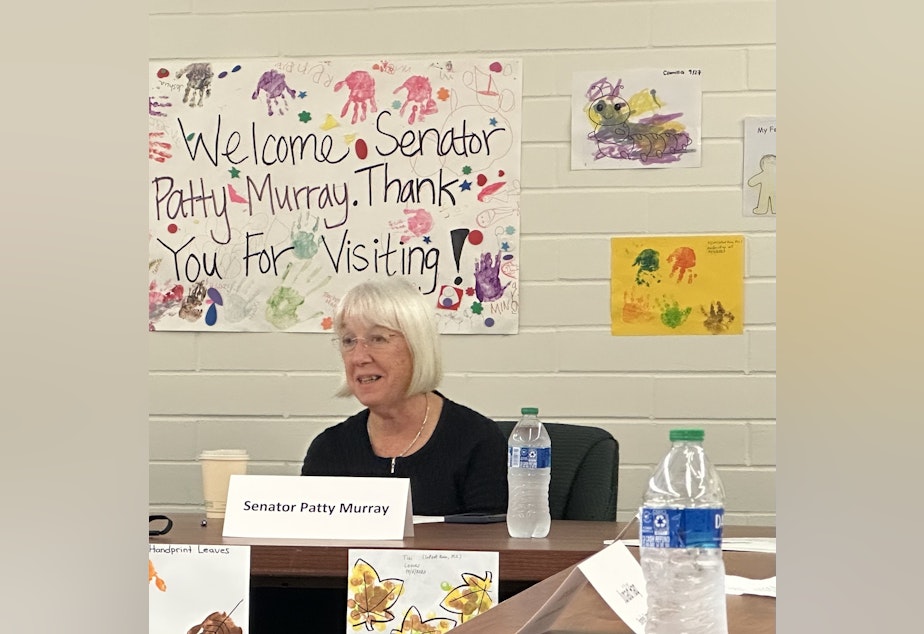Washington state child care providers are struggling to survive. Sen. Murray calls for feds to help

U.S. Sen. Patty Murray, a Washington Democrat, is calling for the federal government to renew its historic investment in the child care industry.
When the pandemic first hit, the Child Care Stabilization Act gave struggling providers across the country $24 billion to help them keep their doors open through Covid.
But that funding expired Sept. 30, and providers across Washington state are already worried they won’t be able to make ends meet.
Since child care providers started receiving those funds, Deeann Puffert said Friday that her organization has heard from providers “every day, every week” that the investment enabled them to recruit and retain staff through bonuses and increased compensation.
“Without those additional funds, they’re going to struggle,” said Puffert, CEO of Child Care Aware of Washington, a nonprofit that helps families connect with child care providers. “That’s just the truth of the matter.”
Puffert shared her concerns with Murray at a roundtable event Friday at Shoreline Community College.
Sponsored
Despite being a critical backbone of the United States’ economy and education, the nation’s child care system has long been broken. For parents, high-quality day care is often difficult to find.
According to the Center for American Progress, about 63% of Washingtonians live in what’s considered a child care desert, which is any census tract with more than 50 kids under the age of 5 that contains either no child care providers, or has more than three times as many children as spots for licensed child care.
Even when child care is available, it's often too expensive for families to afford. In Washington state, the Annie E. Casey Foundation’s annual “KIDS COUNT” report released this summer found the average cost to send a toddler to a child care center had risen to more than $14,000. That amounts to nearly 40% of the median income for single mothers, or 12% of the median income for a married couple.
Laurie Carlsson is among the many mothers in Washington state who has struggled to find and afford child care. Her oldest daughter, JoJo, was born right before she got her bachelor’s degree as a nontraditional student, and she struggled to find affordable options.
“I wasn’t sure I was going to be able to start my new career because of the cost of care,” Carlsson told Murray and other attendees at Friday’s roundtable.
Sponsored
Ultimately, Carlsson was able to snag the last opening in the infant room at Shoreline Community College’s Parent Child Center. Now, both Carlsson’s children attend the center. But she knows many parents are not so lucky.
On the other hand, providers are also struggling to make ends meet.
Labor costs amount to more than 80% of a provider’s expenses. But because caregiver-to-kid ratios are mandated by law to ensure safety, providers have little ability to adjust that cost.
At the same time, the early childhood education sector struggles to recruit and retain teachers and other employees because of low, stagnant wages. According to the U.S. Bureau of Labor Statistics, Washington’s average child care worker made $17.75 an hour as of May 2022. The national average is $14.22.
The child care crisis came to a head when Covid hit, Murray said, when many child care providers shut down because families or their employees stopped coming.
Sponsored
“I am constantly hearing from families who are stressed because they can’t find child care; from businesses who can’t find employees because they lack child care; from parents who say it costs too much,” Murray said.
That’s why Murray says she's pressing for the next White House budget to include $16 billion in emergency funding for child care over the next five years.




